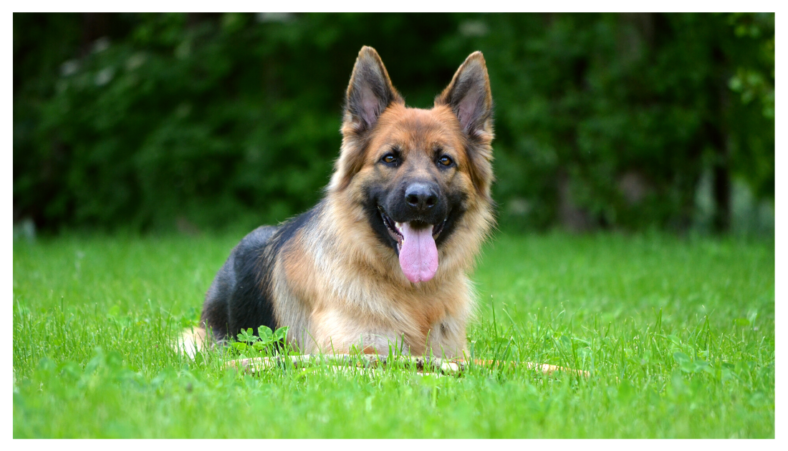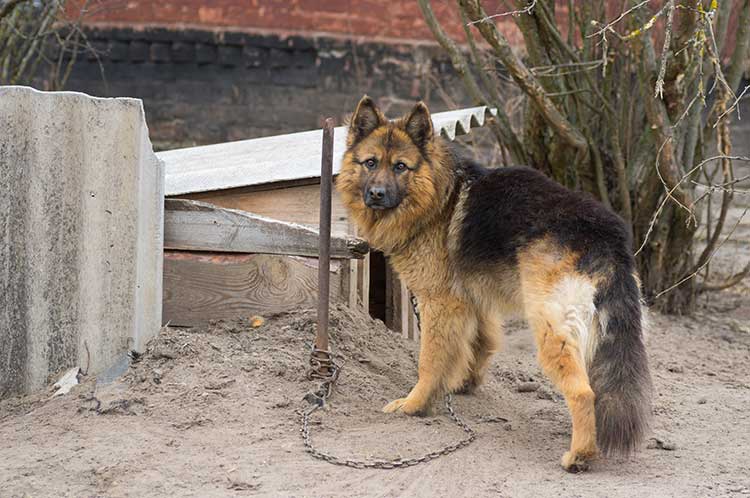Why Are There So Many German Shepherds in Shelters?
In the world of canine companions, the German Shepherd stands tall, both in stature and reputation. Known for their intelligence, loyalty, and versatility, these dogs have been celebrated as heroes in military and police operations, and cherished as family members in homes around the world. Yet, a silent crisis looms: shelters across the U.S. are overflowing with German Shepherds. But why?
1. The Popularity Paradox

German Shepherds are undeniably popular. Their striking appearance and storied history as working dogs have cemented their place in the hearts of many. However, this popularity has a dark side. Overbreeding, driven by demand, has led to a surplus of these dogs. And with popularity comes a slew of impulsive purchases, often by individuals unprepared for the responsibilities of owning such a dynamic breed.
Is A Raw Food Diet for Your German Shepherd The Key to Optimal Health?
2. A Breed Misunderstood

While German Shepherds are known for their intelligence and energy, many owners underestimate the level of exercise and stimulation these dogs require. Without proper care and attention, they can become unmanageable. Their strong instincts and size can be overwhelming for some households, leading to abandonment.
Furthermore, as they age, German Shepherds are prone to chronic health issues. Many owners, unwilling or unable to manage these health challenges, opt to abandon their pets rather than provide the necessary care or make the difficult decision to euthanize.
As a shelter volunteer and pet rescue advocate I can tell you firsthand that between 20-30% of dogs in shelters today are purebred. You’ll find an abundance of Huskies, German Shepherds, Frenchies, Pugs, English Bulldogs, Pocket Bullies, and even designer breeds like Goldendoodles.
Rocky Kanaka
3. The Pandemic’s Role
The COVID-19 pandemic has left an indelible mark on various facets of society, and the world of canine companionship is no exception. According to our recent survey of shelters and rescues across the USA*, 46% observed a slight to significant increase in the number of German Shepherds since the pandemic began. This statistic is alarming, especially when considering the breed’s already prevalent presence in shelters.
4. The Media’s Role
Hollywood and popular TV shows have a history of influencing dog breed popularity. German Shepherds, frequently portrayed in media, are no exception. Shows like “Game of Thrones,” which featured wolf-like creatures, led to spikes in purchases of breeds resembling these fictional animals, including German Shepherds. Many of these dogs, bought on a whim for their aesthetics, eventually find their way to shelters when owners confront the realities of breed ownership.
5. Unprepared Owners

A major factor contributing to the surge is the lack of preparedness among new dog owners. A staggering 92% of surveyed shelters cited this as a primary reason for the increase in German Shepherds. Owners often underestimate the breed’s needs, leading to a myriad of issues:
- Energy Levels: German Shepherds are known for their high energy levels. Without proper outlets for this energy, they can become restless and potentially destructive.
- Training and Exercise: Many new owners were unprepared for the time and financial commitment required to train and exercise a German Shepherd properly. This breed thrives on mental and physical stimulation, and without it, behavioral issues can arise. How Much Exercise Do German Shepherds Need to Thrive?
- Size Concerns: Some owners, perhaps swayed by the appeal of a cute puppy, failed to consider how large German Shepherds can grow. As the dogs grew, owners found themselves overwhelmed, leading to surrenders.
One-Eared German Shepherd Searching for His Forever Home
6. The Breeding Issue
The survey highlighted a concerning trend in breeding. Not only has there been an increase in purebred German Shepherds, but there’s also a rise in “backyard” breeders mixing German Shepherds with other breeds, such as Huskies and Rottweilers. This unregulated breeding can lead to health issues and unpredictable temperaments, further complicating the adoption process.
Examining The Debate Between Dog Breeders and Adoption Advocates
Changing Perceptions and Economic Factors

Several shelters noted a shift in breed popularity. German Shepherds have become the “cool” dog in certain communities, taking the place previously held by breeds like Pitbulls. This trend, combined with a lack of affordable spay/neuter services, has contributed to the breed’s proliferation.
Economic challenges have also played a role. The rising cost of housing means fewer people can afford homes with adequate space for a large, active dog. Additionally, as the world transitions back to pre-pandemic norms, many individuals find themselves without the time or resources to care for their pets adequately.
Stray Dogs Have Increased 30% In Last Two Years
People Abandoning Their Pets

Among the data and statistics, personal stories stand out, painting a vivid picture of the crisis. One such story is of Nala, a German Shepherd abandoned in her family home when the owners relocated. Left alone and distressed, her continuous cries alerted neighbors, leading to her rescue. Fortunately, Nala’s story has a happy ending, as she found a loving home with experienced owners.
Multifaceted Challenges
The survey’s findings underscore the multifaceted challenges facing German Shepherds and the shelters that care for them. As a society, recognizing these challenges is the first step towards addressing them. Prospective dog owners must be educated about the responsibilities of pet ownership, and greater efforts must be made to regulate breeding and promote responsible pet care.
German Shepherd Sees Snow For First Time After Being Chained Up Entire Life ????
A Call to Action
The plight of the German Shepherd is a testament to the consequences of impulsive decisions and a lack of understanding about breed-specific needs. Prospective owners must educate themselves and consider long-term commitments before bringing a dog into their lives.
For those considering a German Shepherd, adoption is a noble and practical choice. Many adult Shepherds, already trained and socialized, await loving homes in shelters. By choosing to adopt, individuals can play a part in alleviating the silent crisis facing this beloved breed.
*survey of 31 shelters and rescues across the USA
How To Find A Purebred German Shepherd In A Shelter
Here’s a list of shelters and rescue groups that specialize in Shepherds. Before you reach out to a breeder, contact one of these organizations first. Also, regular city and county shelters are seeing an influx of shepherds. So even if one of these specific rescues is not near you, visit your local shelter anyway. Chances are high they’ll have a German Shepherd.
Arizona
- Saving Paws Rescue Arizona – Phoenix
California
- German Shepherd Rescue of Orange County
- Westside German Shepherd Rescue – Los Angeles
- Southern California German Shepherd Rescue – San Diego
- Bay Area German Shepherd Rescue – Bay Area
- Second Chance German Shepherd Rescue
- German Shepherd Rescue of Northern California
- Rescue Spotlight: German Shepherd Rescue of Northern California
Florida
- Big Cypress German Shepherd Rescue
- Southwest Florida German Shepherd Rescue Inc.
- Big Cypress German Shepherd Rescue – Naples
Georgia
Illinois
- German Shepherd Rescue, Inc. – IL 60077
- Chicago Canine Rescue – IL 60630
- Central Illinois German Shepherd Dog Rescue
Iowa
Louisiana
Missouri
- Serendipity German Shepherd Dog Rescue – Central Missouri
- Missouri German Shepherd Rescue
Nebraska
Nevada
- Lv German Shepherd Rescue
- Vegas Shepherd Rescue – Las Vegas
New York
North Carolina
South Carolina
Tennessee
Texas
- German Shepherd Rescue of Texas (GSRTX)
- DFW German Shepherd Rescue (DFW GSR)
- Good Shepherd Rescue of Texas – DFW Area
- Austin German Shepherd Dog Rescue
- Greater Houston German Shepherd Dog Rescue – Houston area
- Lani’s Lucky Shepherds of Houston – Houston
- Sauver Des Chiens German Shepherd Dog Rescue
- Second Chance German Shepherd Rescue Houston – Houston
- German Shepherd Rescue Texas
Related Articles
- Stray Dogs Have Increased 30% In Last Two Years
- One-Eared German Shepherd Searching for His Forever Home
- How Much Exercise Do German Shepherds Need to Thrive?
- Top 4 Biologically Appropriate Dog Foods for German Shepherds



